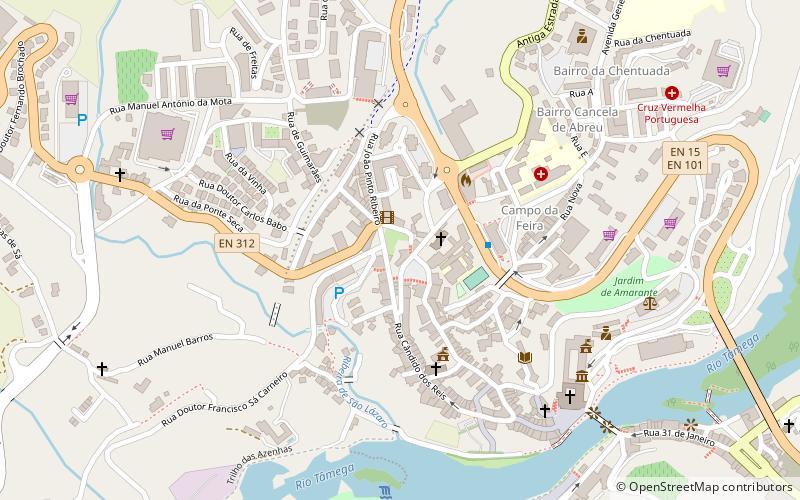Solar dos Magalhães, Amarante


Facts and practical information
Solar dos Magalhães is a sixteenth-century manor house, located in the center of Amarante, which in the 19th century became a symbol of resistance of the Amarante people against the Napoleonic invasion.
Burnt down by French troops in 1809, the manor house keeps only the exterior walls of the original structure. Polygonal in plan, it is divided into two floors, with the composition of the main facade standing out. On the first floor of the frontispiece an imposing loggia was opened with six arches resting on sturdy pilasters, very much in the style of the 16th century Italian treatise. Above this, on the main floor, a veranda was built, whose architrave rests on Ionic colonnade.
The remaining facades are torn by fenestration, placed at regular spaces, which mark the division of space. In the lower register, chest windows were opened, in the upper, balcony windows with balcony.
The house was probably built by António de Magalhães Cerqueira, a Law graduate, Knight of the Order of Christ, and Nobleman of the Coat of Arms.
In the eighteenth century it displayed on a wedge a coat of arms representing the surnames Magalhães, Sousa, Meneses and Coelho. It remained in the possession of the Magalhães e Meneses family, who in the 19th century were elevated to Counts of Alvelos and later Counts of Vilas Boas. At the end of the 19th century the manor was sold to José Monteiro Carvalhal, and the coat of arms was removed and offered to the Baron of Vilalva, José de Magalhães e Meneses, brother of the Count of Vilas Boas and owner of Quinta do Pinheiro, in São Gonçalo. The heirs of his wife Rita Mascarenhas Gaivão moved it to his house in Mirandela, which was later the Estalagem do Caçador, where it was placed over the ameado gate.
The house became a symbol, in 1809, of the resistance to the entrance, in the town of Amarante, of the French troops. It is said that for every day that the resistance to the French occupation delayed the passage through the São Gonçalo Bridge, on the way to Vila Real, General Loison retaliated by setting fire to a noble house. Unlike most of the houses that were burned down, the Solar dos Magalhães was never rebuilt, its ruins remaining testimony to the violent attacks.
Solar dos Magalhães was sold to Joaquim Ferreira Torres, who, on October 14, 1969, gave it to the Municipality of Amarante.
In 2020, work began to transform what remains of the building into Amarante's "House of Memory", according to a project by architect Siza Vieira.
Today it is one of the city's main tourist attractions and also a symbol of resistance against the French invaders.
Solar dos Magalhães – popular in the area (distance from the attraction)
Nearby attractions include: Igreja de São Gonçalo, Parque Florestal de Amarante, Igreja de São Domingos, Igreja de São Pedro.




